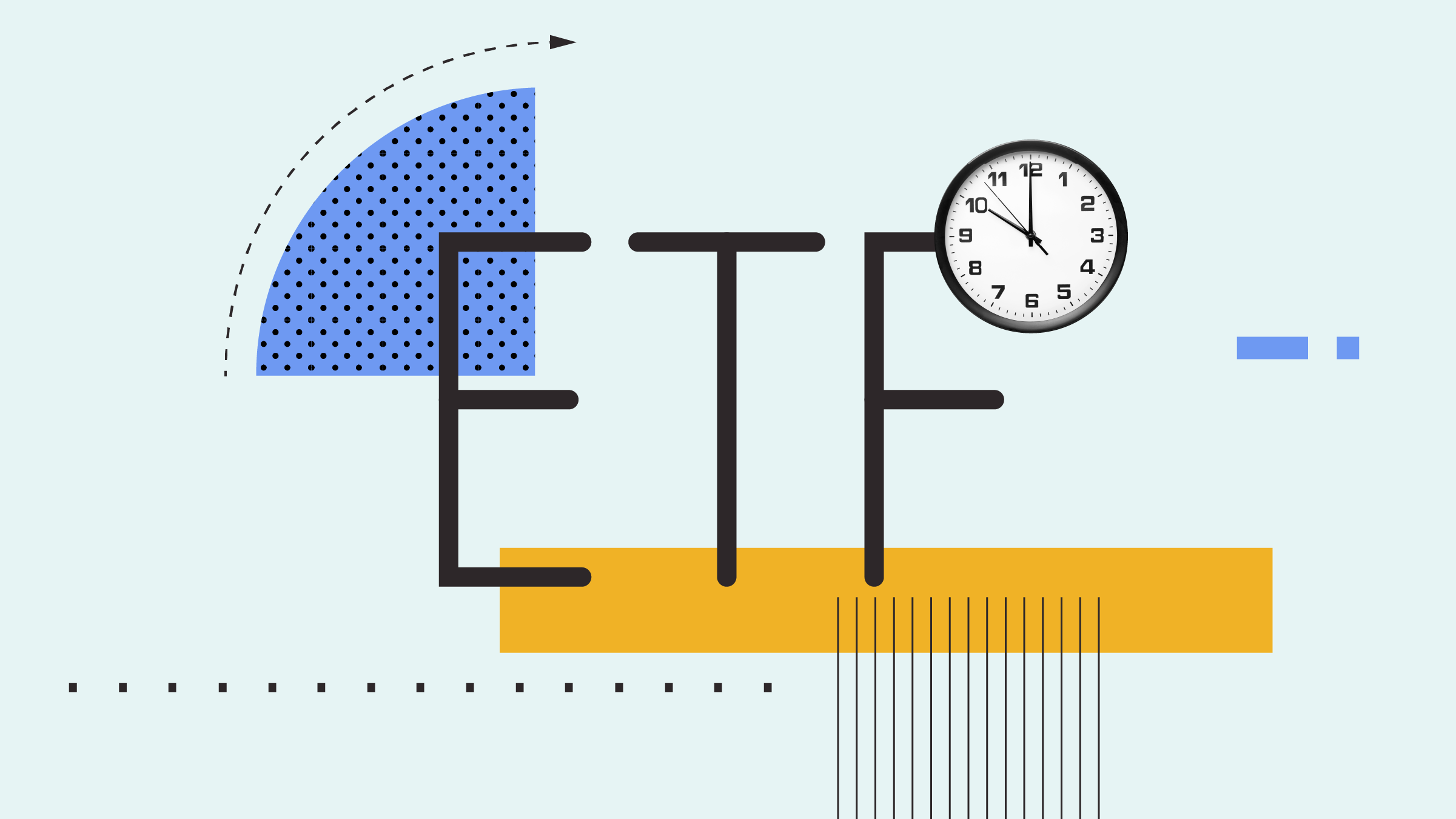Note: This article is part of Morningstar's January 2016 Five keys to retirement investing special report.
Investors everywhere must face the same formidable question: What combination of assets will give me a large enough nest egg to enjoy a comfortable retirement for as long as I live?
The answer depends on a number of factors, including one's age, profession, risk tolerance and health, which change over time. Most investors know they should lighten up on stocks and go heavier on bonds and cash as they age, but the pace at which they should make this shift, not to mention the asset mix they should hold along the way, isn't as clear.
Investors don't necessarily have to answer this question themselves. Target-date funds, which gradually shift from stock to bond-heavy portfolios based on an anticipated retirement date, put the transition to a more conservative portfolio on autopilot. The "glide path" depicts how the funds' asset allocation changes over as the time horizon shrinks.
These portfolios align investors' asset allocation with their time horizon, though not necessarily with their risk tolerance and the human or financial capital at their disposal, as we discuss in this article. Investors could shop around for the target-date offering that most closely matches their needs, but it's not practical to do so since most series are only sold through pension plans.
There's still a lot to learn from target-date funds even if you don't use them, however. These funds may provide insight on how professional asset allocators manage investors' portfolios over a decades-long span. The largest target-date providers design their glide paths and choose the funds' underlying holdings after considering how potential portfolios would behave under a wide range of market outcomes. Investors can piggy back off the target-date managers' expertise and sophisticated software as a guide to constructing their own glide paths.
We reviewed the glide paths of 10 major target-date series in the Canadian mutual fund and pooled fund universes to glean asset-allocation lessons investors can use to build their own portfolios. You'll find three of our biggest learnings below.
Lesson one: Stocks are for retirement and those nearing it
Vulnerable to steep losses over short time periods, stocks seem like a dangerous bet for investors who either are or will soon be living off their savings. It's true stocks are too volatile to fund short- and intermediate-term financial obligations. It's also the case near and current retirees don't have as much time to recover from market slumps as younger investors. The thing is that retirees' time horizons aren't necessarily all that short. A 65-year old retiree could have two more decades, if not more, ahead of her, giving her portfolio more time to recover from market declines than she might presume. She may even want her nest egg to last beyond her death as a gift to family or charity.
Retirees also must face the menace of inflation, which even at modest levels can exact a heavy toll on one's savings. With the real yield of the 10-year government bond slightly negative, fixed income won't do much to protect your portfolio against inflation.
Target-date funds balance nearer-term obligations with the need for long-term growth by keeping a modest slice of near-date portfolios in stocks. The median equity stake for 2020 funds in our sample--designed for investors five years from retirement--stands just above 40%, falling to roughly 35% for 2015 portfolio. (Click here for an illustration of the glide paths for the target-date funds in our sample.)
Most glide paths end in nearly the same spot, with approximately 25% to 30% in stocks. How quickly they get there differs, though. Some get there right away. MFS Lifeplan ends its glide path at retirement, leaving investors with one of the most conservative equity allocations in our sample (about 25%). Blackrock Lifepath's last stop, Lifepath Income, also leaves investors with 37% stock exposure after transitioning from a relatively bold 50% weighting at the retirement date.
By contrast, other glide paths get to the end point more gradually. Fidelity ClearPath offers a case in point. Its glide path rolls down slowly over investors' lifetimes, extending five years into retirement and finishing with Fidelity ClearPath Income. Franklin LifeSmart Moderate's glide path also extends five years into retirement, though with heavier equity exposure entering retirement (approximately 45%, versus 35% for the Fidelity series), the transition away from stocks is sharper.
Not surprisingly, higher equity stakes have meant bigger losses in downturns. In the October 2007 to March 2009 bear market, equity-heavy Blackrock LifePath Income fell 11%, while equity-light MFS LifePlan Retirement dropped 7%. A year after the worst bear market since the Great Depression, though, the funds had more than made up for lost ground. Even a relatively high stock weighting didn't create lasting damage.
Lesson two: Bonds are for the young, too
When I turned 30, I redecorated my apartment to give it a more grown-up feel… and bought my first bond fund. My retirement remained decades away, but I had seen research demonstrating a small bond stake would improve my risk-adjusted return without adversely affecting the expected value of my nest egg. And while it was highly probable stocks would outperform bonds in the ensuing decades, there's no guarantee they will. While not common, stocks have underperformed over decades-long stretches. Bonds make sense on diversification grounds even for those with long time horizons.
The same logic underlies most glide paths geared toward the youngest investors. As you'd expect, all begin with an equity-heavy allocation. The MFS LifePlan and Blackrock LifePath glide paths begin with nearly 100% in stocks, while Manulife held just 60%. These are outliers, though. The median equity weighting for 2055 and 2050 target-date portfolios hovers around 80%, leaving the remaining for a still-substantial 20% in bonds.
Where there's divergence between the series is in how quickly they transition from stock-heavy to bond-heavy portfolios. The MFS series not only starts with an aggressive equity allocation but keeps it that way for at least 15 years. The series moves sharply into bonds thereafter, though its equity holdings remain well above the norm prior to the retirement date. Similarly, Fidelity ClearPath and Standard Life Target Date series move slowly into bonds early in their glide paths, albeit from less-aggressive starting points, while ratcheting down their equity holdings gradually.
Lesson three: Don't be afraid to stray from home
Canadians certainly aren't alone in favouring stocks from their home market. It would be natural for Canadians to choose ![]() Loblaw's (L) over UK grocery giant Tesco, for example, even though both are in the same business. However, such favouritism can be dangerous. The Canadian market is highly concentrated by sector and stock. It also makes up just 3% of the total global market capitalization. While 97% of the value of world's companies is outside of the country, a 2012 Vanguard study pegged Canadians' allocation to domestic stocks at 60% of their total equity exposure.
Loblaw's (L) over UK grocery giant Tesco, for example, even though both are in the same business. However, such favouritism can be dangerous. The Canadian market is highly concentrated by sector and stock. It also makes up just 3% of the total global market capitalization. While 97% of the value of world's companies is outside of the country, a 2012 Vanguard study pegged Canadians' allocation to domestic stocks at 60% of their total equity exposure.
No series in our sample had a domestic equity weighting this high. In fact, just one--Standard Life Target Date--had a (bare) majority of its stock exposure in Canadian names. The median stake in domestic equities was 30%--half as high as the levels cited in the Vanguard study. The home country bias remains, but there is a case to be made in favour of a modest bias. Most Canadians' retirement expenses will be priced in Canadian dollars, and investing abroad entails more currency risk. Investing at home also comes with tax advantages, as dividend income from domestic firms is taxed at a lower rate.
The series differed little in how they divvied up the remaining 70% allocated to foreign stocks. In aggregate, they favoured the United States over international equity, though not by much. The typical foreign split was more likely to look like Blackrock's (55% U.S./45% international) than BMO LifeStage's (40% U.S/60% international).
Somewhat surprisingly, the Canadian/U.S./international allocations (as a percentage of total stock exposure) remain fairly constant over the full glide path. One might expect a more Canada-heavy stock allocation as retirement nears to limit currency risk--a sensible assumption if viewed outside the context of the full portfolio. However, overall foreign currency exposure falls as stock exposure shrinks. Funds' bond holdings generally court less currency risk. That's because most series' emphasize Canadian bonds and are apt to hedge at least part of their foreign bond holdings back into Canadian dollars.




















